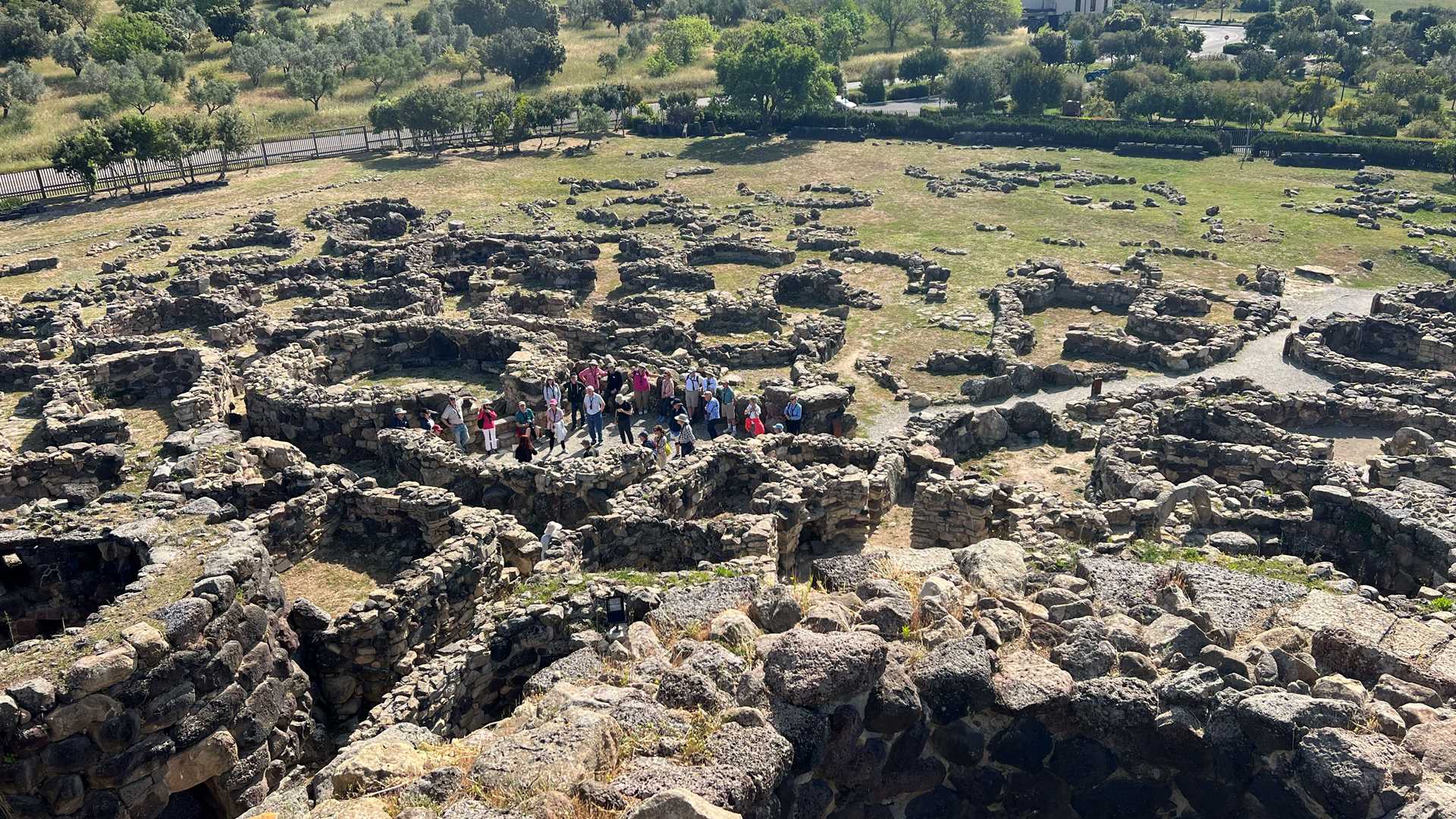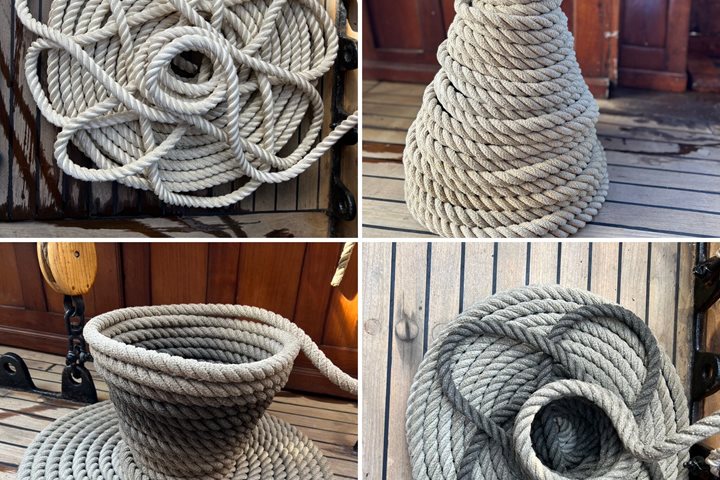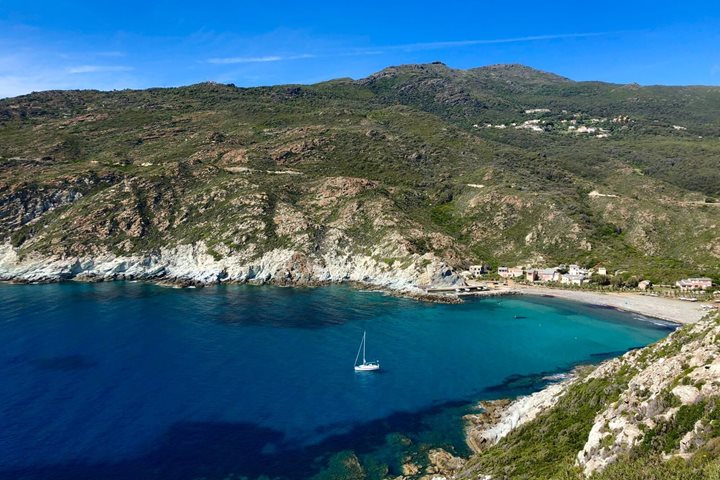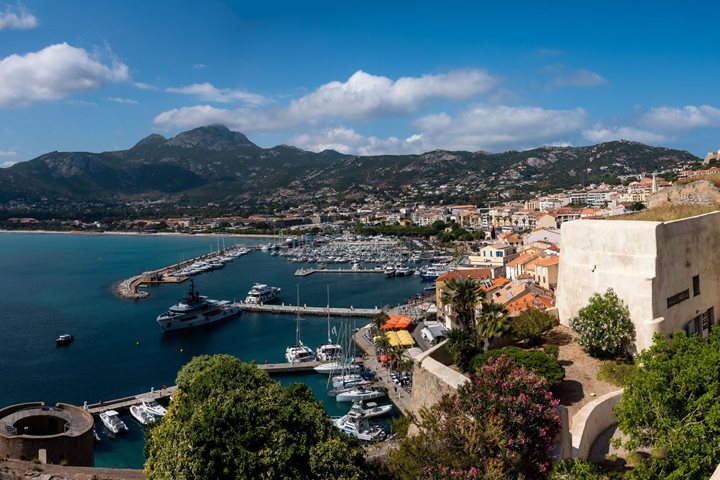Our first day in Sardinia was a perfect one – the sun was not too strong; the winds were slight, and the journey to Su Nuragi Barumini was a pleasant one. After a 75-minute ride through the beautiful unspoiled Sardinian countryside, we arrived at our destination of the prehistoric site of Su Nuraxi just outside the small village of Barumini. The coaches took us past the fertile plains of Sardinia where the fields were filled with yellow daisies and brilliant red poppies.
None of us were prepared for what we saw – a stone habitation complex of small homes which is surrounded by a complex of four corner towers dominated by a massive cenral tower built with cyclopean stones. We climbed to the top and walked through a low stone corridor to reach the interior. The Nuragi towers were built by constructing two parallel circular walls, one exterior and one interior approximately four to five feet apart. As the large stones for the walls were laid and the complex grew in height, the area between the stones was layered with smaller stones and clay and hence a ramp like structure developed incrementally between the walls.
The Nuragic people were skilled in metallurgy and made their own bronze tools and weapons. The complex was begun about 1650 BCE and was continuously inhabited until 600 BCE. In the small village outside the tower, we saw a small hut with a large quern for grinding grain, kneading tubs, and the ovens where the community’s bread was baked. There are some seven thousand Nuragi settlements scattered throughout Sardinia’s 24 thousand square kilometers. The Nuragic people appear to have begun abandoning these sites after the Phoenicians arrived in Sardinia in the 8th century.
After lunch we had a walking tour of the old town. Our next visit was the stunning new archaeological museum. The exhibits were of artifacts of all Sardinian cultures from the Neolithic period, the Bronze Age, and through the Punic, Greek, and Roman period. I was very struck with the quality of the signage in English and the sophistication of the items on view. The famous “Nora” Stone contains the first instance of the word “Sardinia” written in Punic script and dates from approximately 750 BCE.
After the museum, we then walked through the Castello area and visited the Cathedral of the Blessed Virgin Mary. The exterior façade had a nice mosaic of St. Cecilia, the patron saint of musicians. Cecilia was a young woman who was imprisoned and martyred during the persecutions of the Roman Emperor Diocletian in 303 CE. The interior of the Cathedral is now massively redone in the baroque style. Of note was the crypt with the hundreds of tiles detailing the images and names of Christian martyrs. In one small chapel there was a tomb of the young son of the Austrian Empress, Maria Theresa. I noticed directly behind this elaborate tomb the façade of a Roman sarcophagus for a young boy. While it may seem odd to have an elaborate sculptural motif of a pagan Roman child in a Christian church, such practices were commonplace.
We completed this wonderful day with a fabulous Italian barbecue on the lido deck. The sun was shining and the sea was calm. A massive yellowfin tuna in monumental splendor and a roast suckling pig made for a fantastic dinner. The conversation was great, and all went off to bed having had an outstanding day.









